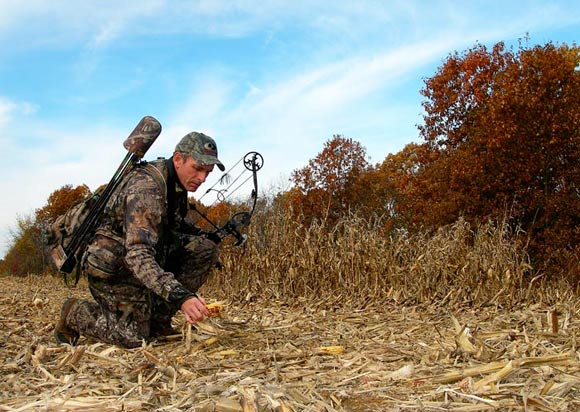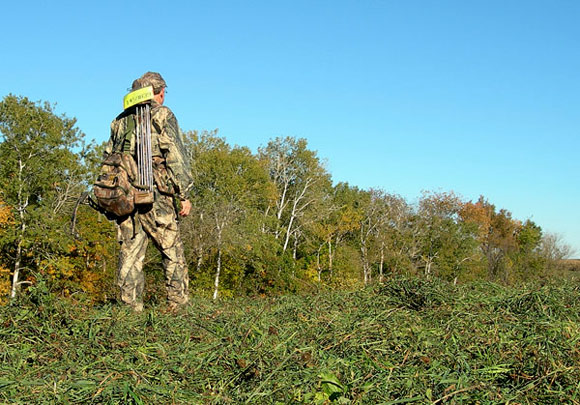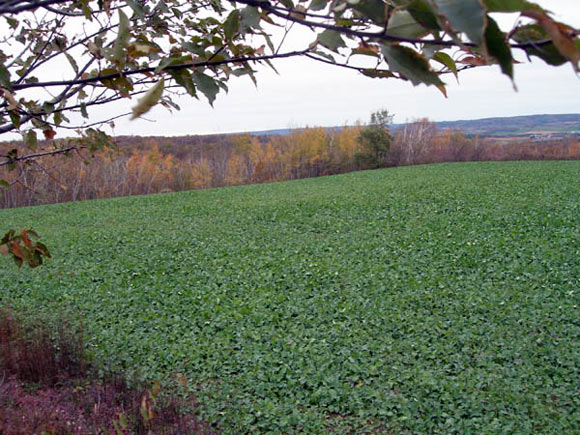LAST UPDATED: May 1st, 2015
If chronic wasting disease hasn’t concerned nonhunters the past 11 years because they’re vegans, vegetarians or someone who just avoids venison, recent research suggests their CWD exemption might be ending.
In case you missed it, Christopher Johnson at the National Wildlife Health Center in Madison, Wis., discovered that plants take up prions – infectious, deformed proteins that cause CWD – from contaminated soils and store them in stems and leaves.
Research shows that corn and other plants can pull CWD-causing prions from the ground, store them in stems and leaves, and possibly transfer them to anything that eats them.
In turn, when Johnson injected these materials into laboratory mice, they showed evidence of the disease. Johnson is awaiting test results to determine if other lab mice caught the disease after eating infected plants.
Johnson wrote: “Our results suggest that prions are taken up by plants, and that contaminated plants may represent a previously unrecognized risk of human, domestic species and wildlife exposure to CWD.”
Johnson was scheduled to present his findings Oct. 7 in Milwaukee at the annual meeting of The Wildlife Society. However, because he’s employed by the U.S. Geological Survey, his talk was canceled by the federal government’s budget impasse, and he can’t share more insights for now.
Because prions aren’t living organisms, they remain infectious indefinitely, whether they’re in soil or living matter. And although CWD prions were once thought confined to the brain, spleen, tonsils, lymph nodes and spinal cord of deer and elk, they’ve since been found at lower levels in their eyes, heart, blood, urine, saliva and muscles.
So far, science has found no evidence that CWD can infect humans who eat contaminated venison, but the World Health Organization and most state wildlife agencies advise people not to eat CWD-positive animals.
The state of Wyoming adds this warning: “Until more is known about the human health risk, individuals may want to consider the theoretical possibility that a yet-to-be-determined human health risk may exist before consuming CWD-infected animals.”
Johnson’s findings raise concerns beyond deer hunting’s world. One unknown is whether plants alter CWD prions in ways that make them increasingly infectious. Laboratory tests show that prions injected into mice can change enough that even though the first mouse doesn’t die, its tissues kill mice in subsequent injections.
We also don’t know how much prion concentrations vary by individual plants and plant species, or how much prion uptake through roots varies by soil-contamination levels. And depending on whether Johnson’s lab mice contract CWD by eating prion-tainted plants, we need to learn whether it takes one spoonful — or one barnful — of the stuff.
Therefore, if I were Wisconsin Gov. Scott Walker, I’d ask if its state agencies should start planning research gardens at the former Stan Hall deer farm near Almond in Portage County in central Wisconsin. That would better use state-agency resources than his edict this past summer to draft rules to spare captured fawns in the CWD zone from state-sponsored euthanization.
You might recall Hall’s farm, otherwise known as Buckhorn Flats, was once a commercial deer-breeding and shooting preserve. After the state of Wisconsin closed the 80-acre operation in 2005 and killed the 76 deer in its breeding pen in January 2006, tests revealed 60 of the whitetails, 80 percent, carried CWD.
It’s North America’s worst CWD infection. In fact, its soils are so tainted the state had to buy the property. The Wisconsin Department of Natural Resources intends to make it a research facility, so what better place to test how efficiently potatoes, parsnips, carrots, lettuce, zucchini, broccoli, green beans and other common food plants pull prions from CWD-tainted soils, and pass them along?
So far, Johnson has tested corn, alfalfa, tomatoes and thale cress – a small, flowering plant used in plant-science research.
Hunters can’t remove deer carcasses from most CWD areas. They must first bone them out and transport only the meat.
Perhaps researchers should also plant grape vines, and oak, pear, plum, apple, cherry, walnut and hickory trees at the Hall property. After all, the prions won’t disappear soon.
Consider the stakes: If state and federal agencies think it prudent to tell hunters to destroy prion-contaminated venison, will they soon warn everyone about prion-tainted plants? For that matter, will they stop farmers from buying, selling and transporting hay bales out of CWD zones? It’s illegal to haul deer carcasses from Wisconsin’s CWD zone unless you’re headed to a taxidermist or butcher shop.
And what about backyard gardens, morel mushrooms, wild raspberries and feed-grains growing in that ever-expanding CWD zone? Should we assume they’re prion-free? And if Great Britain and other countries won’t import U.S. animal feeds containing CWD-exposed meat byproducts, will they next ban plant-based feeds?
Granted, it’s silly to suggest raiding farmers markets and roadside stands that sell foods grown in CWD areas. We simply don’t know enough to risk another CWD panic.
But this much is certain: As Wisconsin and other states with CWD slowly assembled the disease’s puzzle piece by piece since 2002, the picture has only grown uglier. Meanwhile, Wisconsin lawmakers worked harder to stop research for more puzzle pieces than they did to control the state’s deer herd, CWD’s undisputed chief carrier.
If researchers learn that animals can catch CWD by eating infected plants, it could have huge repercussions on the agricultural industry.
Lawmakers shouldn’t need reminding that we invite disease when allowing wildlife populations to outgrow their habitat, which is now happening in many parts of Wisconsin – most notably in its CWD zone.

 By
By 






